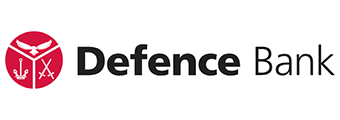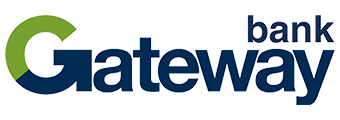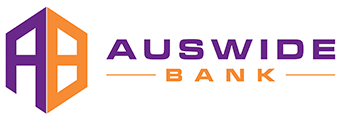
A study from Allianz in July 2023 found more than 25% of Australians lacked the knowledge and skills to make sound financial decisions. The Banking Royal Commission in the late 2010s called the lack of financial literacy among the Australian public ‘frightening’ and said it was likely contributing to dysfunction in the banking industry.
Part of the problem is children not being taught about money in school. Many children graduate high school without having a clue about taxes or how the banking system works, and many levels of maths don’t teach ‘real world’ concepts.
And parents might not know where to start, either - it’s not all up to schools! A survey from kids money app Kit in September 2023 found 26% of parents felt ill equipped to teach their children about money, while 46% admitted their children’s financial future kept them up at night.
So, if you’re a parent who wants to give your kids the best start in life, it’s important to make sure they understand how money works.
1. Pocket money
A survey from the Commonwealth Bank found nearly 80% of Australian parents give their kids some sort of pocket money. It can be a great way for children early on to start thinking about budgeting: should I really be spending this week's allowance on Marvellous creations when there’s a video game I want coming out next month?
The following is the average amount per age group, according to CBA:
|
Average weekly pocket money |
|
|---|---|
|
4-6 years old |
$7.17 |
|
7-9 years old |
$7.04 |
|
10-12 years old |
$11.37 |
|
13-15 years old |
$14.11 |
Should kids have to work for their pocket money?
Another question many parents ask themselves is whether to award pocket money conditionally, perhaps after completing household chores or an academic achievement Every parent will look at this differently, and there’s certainly no right or wrong answer. A policy like this could reinforce to your children that generally, things won’t be given to them for free, and help them see the relationship between labour and money.
On the other hand, you don’t want your child to come to expect payment for doing things they should be expected to do anyway. Nor do you want to tie financial success with good grades, and potentially breed a fear of failure.
Should you give pocket money in cash?
Once you’ve decided how much allowance to give your child, and whether they need to do anything to earn it, the final decision is what type of currency to give them. Cash is tangible, which for a child probably makes it easier to understand.
However, as of 2022, the RBA say cash made up just 13% of all payments made. You might decide you would better serve your child by opening a bank account as soon as possible and simply depositing money in there, to get them used to how money will likely work when they are an adult.
2. Saving and investing
Pocket money can be a great way to teach your children about spending, and the value of saving, but investment is another important concept to introduce as soon as possible. Naturally, a child will likely be looking to spend their pocket money on things they enjoy, but it might be a good move to show them early on putting that money into a high interest savings account or other types of investment can mean it grows without them doing anything.
A savings account aimed at children could be a good way to teach kids not only about pocket money, but also teach them about interest. There they could see their savings grow, and also know that by parking more money in, they get more money from the bank. Interest compounds, meaning interest earns interest.
3. Interest, credit, and loans
Most credit products aren’t available to people under the age of 18, but it’s still a bit alarming that many fresh adults are eligible to apply for a home loan or a credit card for example, without understanding how interest rates work.
Consider payday loans for example, which often have a comparison rate of over 50% p.a. This would mean a huge interest bill over a loan term, but people who aren’t educated about how this works might look at the repayment schedule and feel they are getting a very reasonable deal.
Many areas of financing, such as dealership financing, don’t express the interest rate on advertisements. For example they might say ‘Own this Corolla from $50 a week!’ which seems cheap, but actually isn’t a very useful metric as to how much you’re really paying.
It’s probably worth at least making sure your child has studied interest as part of Maths, and filling them in if not on how borrowing works, and how interest is calculated. As they reach high school, many ‘real world’ maths examples aren’t taught at the higher levels.
If your child has some money homework to do, you could use InfoChoice’s mortgage and savings calculators to see how it affects how much you pay or receive in the end.
You could also buy them something they’ve been wanting, then ask them to pay it back as a proportion of their pocket money. You could then tack on $1 at the end as ‘interest’, and develop a payment schedule.
4. Budgeting
It can be very hard as a child knowing your mum or dad has $1,000 in their bank account they can’t just spend on 20 sets of Bakugan Battle Brawlers.
Instead, only a small portion of that $1,000 might go towards fun stuff; some will go to expenses such as housing, food, and childcare; and the rest goes to saving where possible.
You could teach them how you budget, if you have one, or a popular method is the 50/30/20 rule. 50% goes to expenses; 30% goes to fun; and 20% goes to saving. If you’re feeling frugal you can flip the other two around.
This would mean if you got $1,000 a week, ideally no more than $500 would go to expenses, $300 would go towards fun like hobbies, movies, and eating out, and $200 would be parked in a savings account or other investment avenue.
The 20% savings could be split further into different goals, such as shares, an emergency fund or other avenue.
5. Value for money
Once your child is receiving regular pocket money and knows about a budget, you should hopefully see them naturally become more conscious with their spending over time. Trial and error will help them learn about what purchases are worth it and which are not, but there are a few ways you might be able to help them develop these skills.
Next time you’re at the supermarket, you could walk your children through your decision making process when buying everyday household items. For example, you could show them how buying in bulk means you end up spending less money overall.
You could also concepts like ‘cost per 100 grams’ to help them compare things. The cost per 100g or per unit is displayed on product pricing stickers, and you can show your kids even though the smaller packet is cheaper, it might be actually better value to get the bigger pack.
More advanced concepts
Inflation
You probably don’t need to teach your child how the CPI indicator is calculated, or discuss the finer details of how a modern economy works, but it could be worth a basic lesson explaining that the price of most things tends to go up over time i.e. the dollar goes less far than before.
This might be as simple as pointing out price increases for their favourite sweet treat. For older or precocious children, you could even expand on this, explaining a little bit more about some of the ways this can happen.
“Imagine you have a lemonade stand, and you sell glasses of lemonade for $2 each. Your stand starts to get more popular, and eventually there’s a long line of people waiting to buy lemonade. One day, you are down to the last glass you have for the day, but there are several people who are still in line. Someone near the back says they will give you $3 if you give the remaining glass to them. Everyone else in line then quickly makes it clear they are also willing to pay the extra dollar. The next day, you decide to sell every glass for $3, since you now know your customers are happy to pay this much. This means your lemon stand makes more money, which you can then spend on extra lemons in order to make enough lemonade for everyone who wants a glass.”
Taxes
It’s a tough one to make interesting, but it’s definitely a good idea to make sure your kids have at least some idea of taxation is. It probably isn’t worth getting stuck in the weeds of the finer points of taxation with an eleven year old, but you could introduce the basic concepts of income tax and deductions so they aren’t starting from zero by the time they are old enough for it to be relevant.
If your child has pocket money, you could ‘tax’ them $1 (and then maybe give it back to them at Christmas or birthday time).
Currency and the banking system
Having a discussion with your child about what money actually is could be a great way to get them (and even you) thinking more generally about how human society works, as well as the financial system.
When you think about it, it is a little weird that we all accept this convention that little bits of paper or numbers on a screen represent value, so it’s worth exploring with your child why we’ve decided to make that a thing.
You could explain it like this…
“If we didn’t have money, we’d just have to trade things with one another.. You’ve got a goat, which you want to give to someone in exchange for a busket of apples. However, you don’t know how many apples a goat is worth. Now let's say you and the person you are trading with decide you would like to buy half a goats worth of apples, but you can’t just split the goat in half. Money solves both of these problems.”
The banking system could also be another idea to explore with more curious children. It’s a big shock for a lot of people to find out that banks don’t have all of their customers' deposits on hand, so you might be able to give your child a leg up by filling them in early about how banks use deposits to give out loans. This is a fairly sophisticated idea though, so don’t panic too much if they can’t get their head around it.
How to make money talks fun
Of the parents surveyed in the Kit report, 80% thought games could be a good way for their kids to learn about money. With that in mind, here are a few of the child friendly games available in Australia that could help improve their financial literacy.
Kit Money Quests
Kit, a kids money app from CommBank, recently launched Kit Money Quests within the app, where children can complete quests and mini games that aim to teach them about basic financial concepts. The games will prompt kids to complete real world tasks like setting a savings goal, as well as gamifying scenarios like spotting a scam text or email
ASX share market game
Perhaps more suitable for older children, the share market games offered by the ASX could nevertheless be a great introduction to the world of investing. The ASX game runs from August to November every year and players get $50,000 in virtual cash to buy and sell shares in more than 300 real, ASX listed companies, using real prices. It offers information about how the share market works, and provides investment strategies as well as updates on market conditions.
Monopoly
We take it for granted, but it’s quite amazing when you think about it that one of the most popular board games of all time is economics based. Things like rent, mortgages and taxes become an exciting part of the game in Monopoly.
If you can get your kids around the Monopoly table, you might find their curiosity means they end up asking about these concepts, which could be a great opportunity for learning. Just don’t be surprised if they flip the table once they lose and realise the message of the game is a comment on the relentless crushing blows of consumer capitalism.
This article was initially published by Jonathan Jackson in 2019 and updated in 2023








